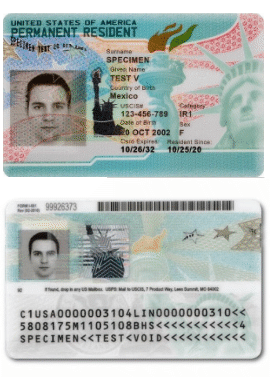Naturalization
|
(Wikimedia Commons) |
The “Green Card”: The Path to Citizenship
The so-called "green card" is an identification card that shows an immigrant holds the status of a lawful permanent resident (LPR). The card used to be printed on green paper. It no longer is, but the name has remained. To get a green card, a person must apply. U.S. law sets five areas of preferences for granting green cards:
- Family-sponsored preferences for those related to U.S. citizens.
- Employment preferences for those who have needed job skills.
- Diversity immigration for those who come from countries with low rates of U.S. immigration.
- Refugees admitted to the United States.
- Those already granted political asylum.
Lawful permanent residents are authorized to reside and work in the United States and travel abroad. Generally, after living for five years in the United States, an LPR may apply to become a U.S. citizen. Some LPRs need not wait five years. The spouse of a U.S. citizen may apply after three years, and a person seeking political asylum may apply after four years. Additional requirements for naturalized citizenship include:
- Physical presence in the United States for a specified period.
- A good moral character.
- Being able to read, write, speak, and understand ordinary English.
- Being at least 18 years of age.
- Passing a citizenship test.



